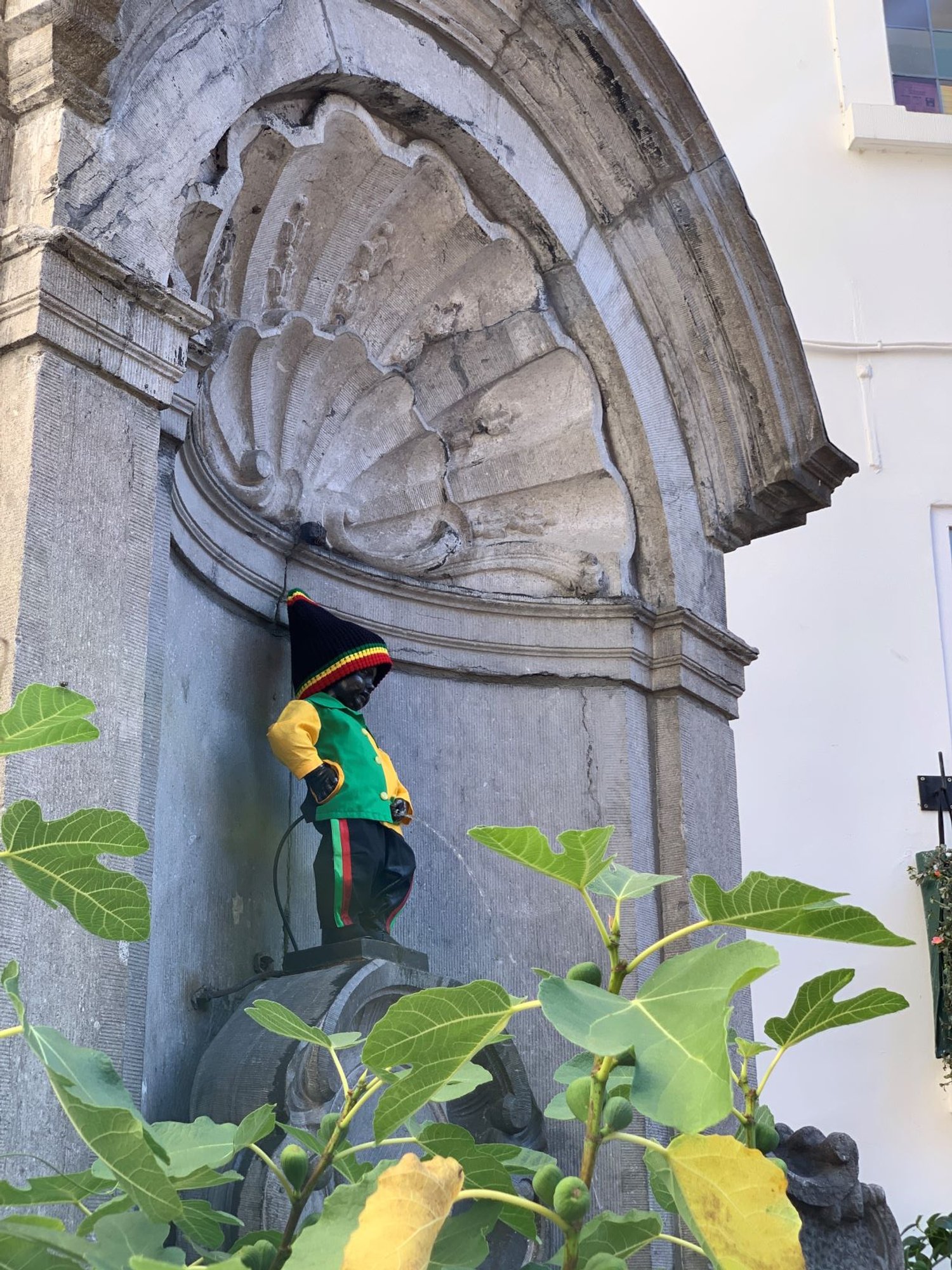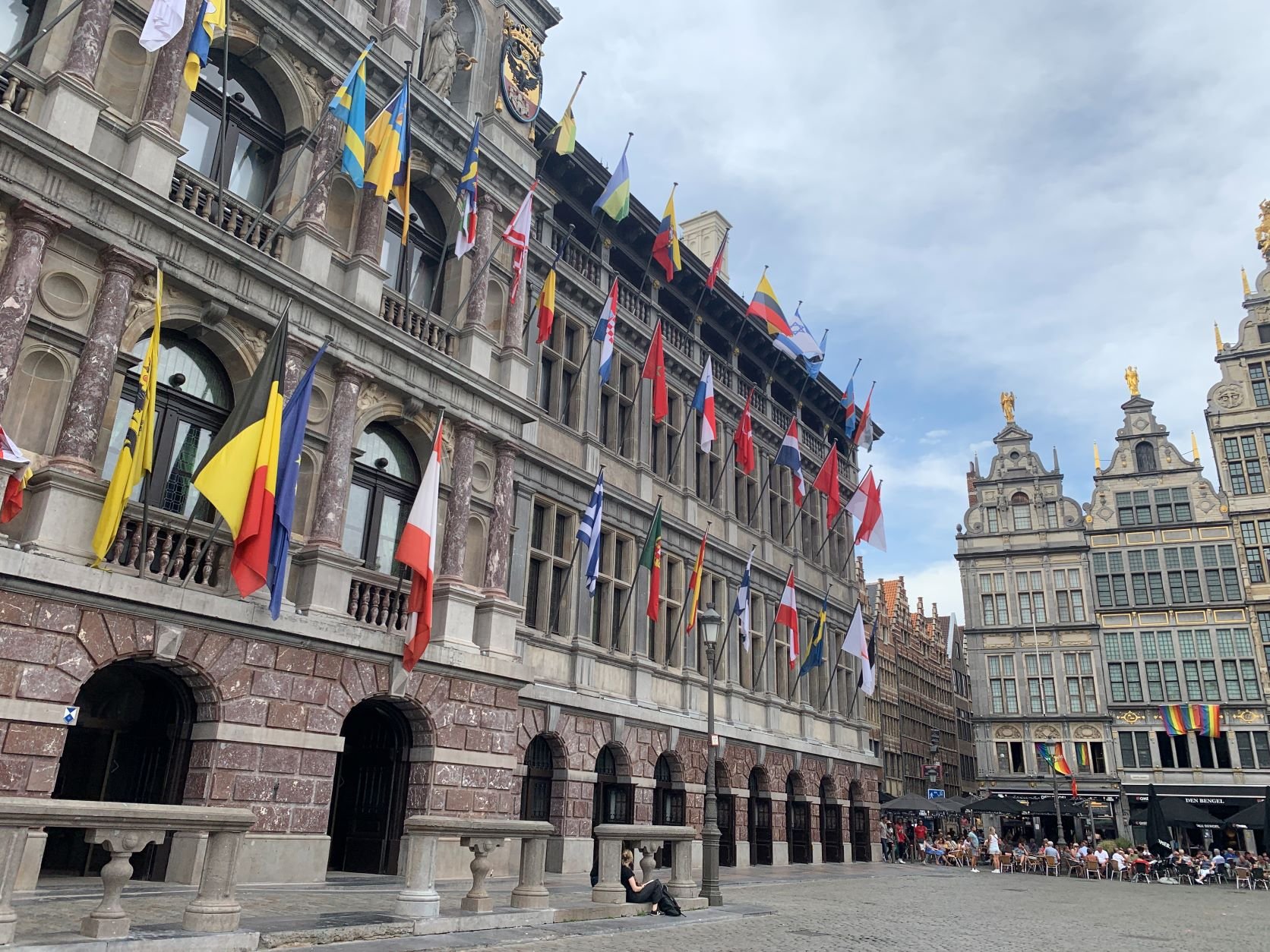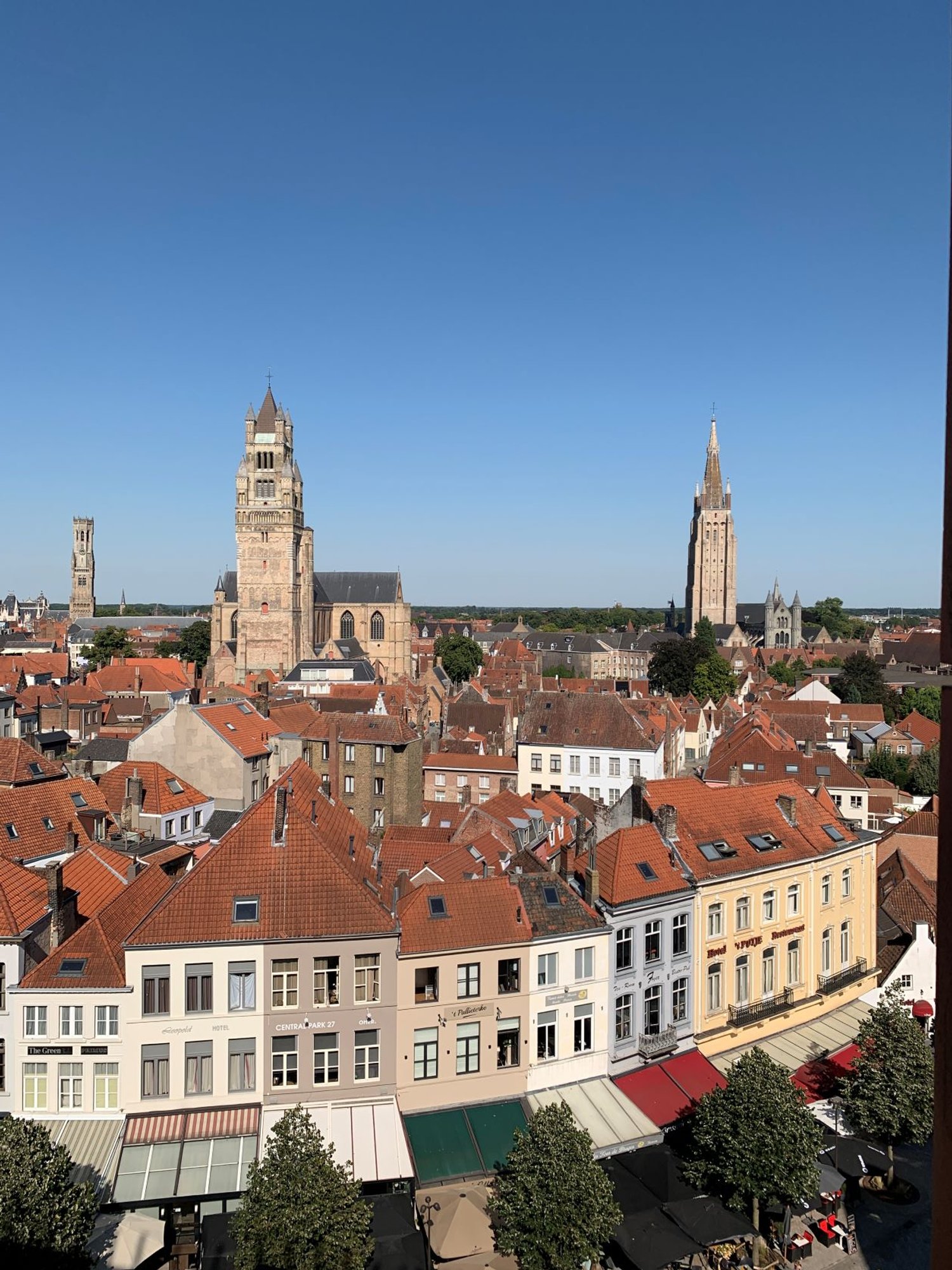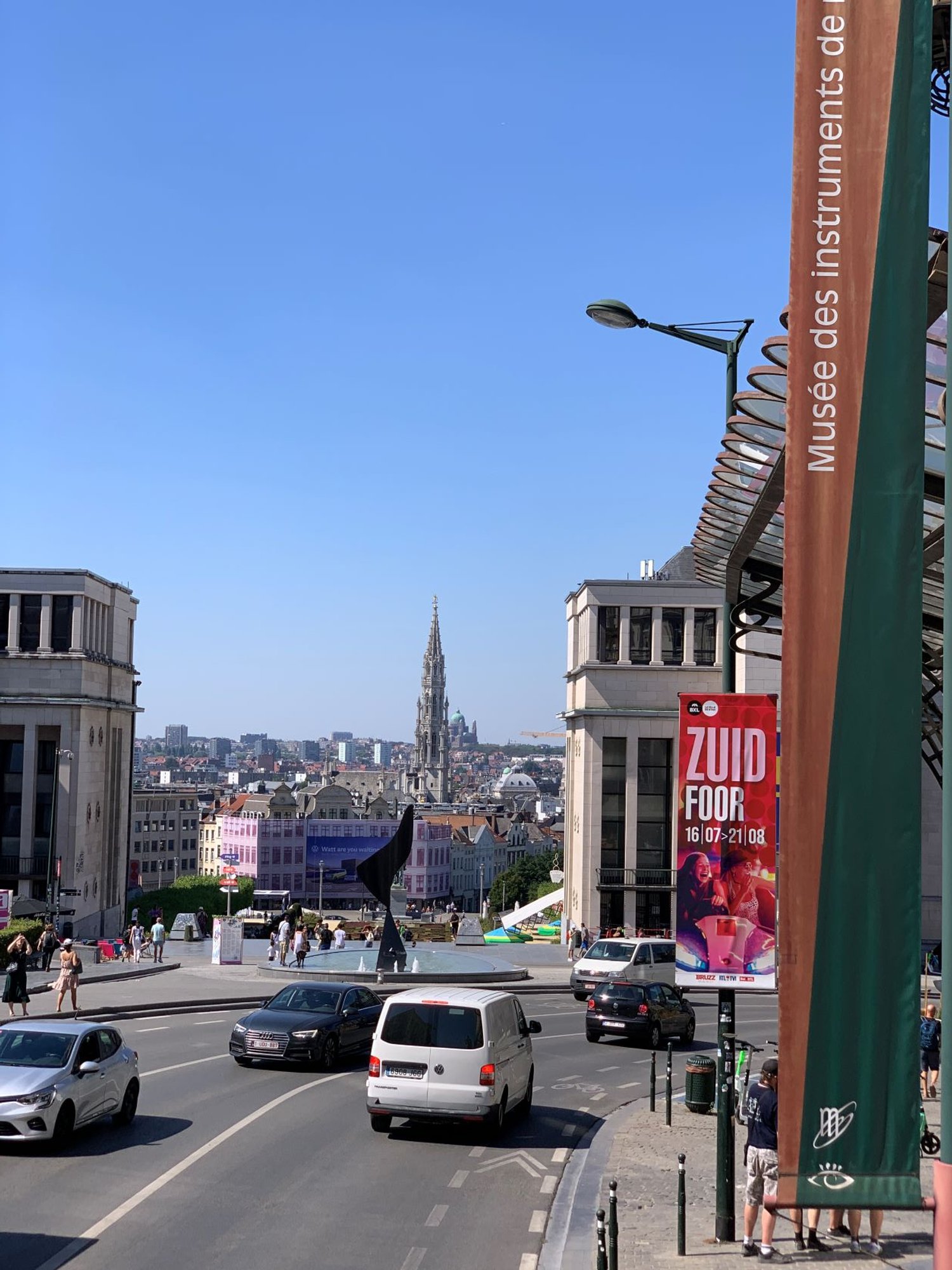Planning a Trip to Belgium
The iconic Mannekin-Pis statue in Brussels, Belgium, which always has hordes of tourists massed around it. Brussels, Belgium. August 11, 2022.
Rarely do I feel, in leaving a place, that I’ve seen it and don’t need to go back. Especially when that “place” is an entire country.
I’ve been to Belgium twice and have barely seen a few highlights—even of cities and towns I visited on both trips.
This overview guide to planning a trip to Belgium covers mainly the western half of the country; I’ll need to go back to Belgium to spend more time in the western half of the country and see the eastern parts I haven’t seen yet.
As I do—because I have more than one trip to Belgium ahead, I believe—I’ll update this post!
Base of Stay Recommendations
Brussels would seem like the logical choice as a base of stay for a visit to Belgium, though we found it less than ideal. We’d landed there less based on research and more to connect with other travelers who had already chosen it as a landing spot.
As one of the large European cities, Brussels can feel overwhelming to a visitor—and overwhelmed by visitors, at that. The sheer number of tourists in the central part of the city make it less than pleasant. Central Brussels is crowded, hectic, and messy. Further, the city’s size makes it difficult to get into and out of easily for exploring other parts of the country via car or public transportation.
Nevertheless, if Brussels is the most convenient city for the logistics of your trip, it checks the other boxes for what you need in a base of stay. (More on that subject in this article I wrote about trip planning!)
Instead of Brussels, I would highly recommend a base of stay in Belgium in a less hectic and more accessible city. Personally. I would lean toward Ghent. Ghent has a fairly central location (at least to the western part of the country), making trips into other parts of western Belgium shorter. Further, you can easily get into and out of Ghent via car and train, given its manageable size. And finally: Ghent has a much more relaxed, peaceful vibe.
Day Trips in Belgium
If you choose one of the below cities as your base of stay, you’ll have more time to see the sights there!
And you’ll still have access to any of the other cities as a day-trip option. Each of these cities is easily accessible to the others for a day of sightseeing and touring.
If you’d like to visit these cities in historical-progression order by period of their flourishing, you’ll want to start in Bruges (middle ages), then visit Ghent (later middle ages), and follow up Ghent with Antwerp (late middle ages and early Renaissance). Brussels didn’t hit heights until almost the modern era.
Antwerp
Antwerp, in a word (if hyphenated words count) is jaw-dropping. We spent far too little time in the city, which deserves a more dedicated visit of at least a few days. If you do have only one day in Antwerp, take the historical-overview guided walking tour from the city’s office of tourism and then choose one or two museums that appeal most to you.
In the northernmost part of Belgium and located on the Scheldt River (connected to the North Sea), Antwerp has long served as an important port city for Europe, stretching as far back as the late Middle Ages and reaching true prominence during the Renaissance period. The city traded and still trades today in a remarkable number of commodities—most famously, diamonds. The city gained prominence in the diamond trade back in the 16th century and today some 84 percent of all rough diamonds come through Antwerp, with another 50 percent of them coming back to Antwerp for cutting and polishing.
Antwerp boasts cultural and arts experiences, world-class museums, and gorgeous architecture. I wish I’d managed to take more pictures!
Bruges
Shortly after arriving in Bruges, we made it to the tourist office—which I passed several times certain that it was a tourist attraction and not the city’s official visitor welcome center. (Tourist offices tend to have a more, let’s say, “clean” aesthetic.)
But no—the tourist office in Bruges indeed looks like a tourist attraction, replete with mannequins attired in medieval garb and an animatronic medieval man welcoming visitors to Bruges in several languages.
The nature of the Bruges tourist office mirrors the nature of the town, which has rebuilt and remodeled itself to something like its medieval splendor and decked itself out as a tourist site allowing people a glimpse of medieval Belgium. Bruges felt a little too “theme park” for me, but it would perfectly suit families with young children. How better to show kids a little medieval history in an accessible and fun fashion?
Brussels
Brussels houses one of the seats of the European Union, marking it one of the most important cities in Europe.
Accordingly, the city is bustling and chaotic, though filled with museums, historical sites, and cultural activities. You can’t get a feel for Brussels in a short visit with a walking tour; you really need to go full-tourist and get on one of the tourist buses available all over the city to get an overview of the city’s rationale and its component parts.
The general overrun of tourists meant that we had trouble finding amazing restaurants in Brussels, though we managed to eat well enough while there. I can say, though, that we did not agree with the recommendation to have dinner in the Atomium landmark (an atom built for the 1958 World’s Fair). Take a pass—unless you want overpriced reheated food similar to what you get on a transcontinental flight served in an airless bubble.
Ghent
As with Bruges, Ghent has largely restored and rebuilt to its medieval history, rather than having had it preserved and in place since medieval times.
However, unlike with Bruges, Ghent hasn’t gone full “theme park” with its medieval history and visitor options. Even though rebuilt, Ghent feels more organic and more natural—with a far less touristy tang. Ghent feels more as though modern city planners, in evaluating what would make the most livable central city, decided that a more human-sized layout allowing for walking, biking, and public transportation made the most sense. They then went in that direction (and continue to do so, based on the new-build construction we’ve seen).
If you go to Ghent, you’ll find absolute can’t miss medieval architecture and art, as Ghent held place as one of the most important cities in the medieval period. You can learn more about what to see and do in Ghent—and see so many more pictures—via my post dedicated to the city. (I love it enough that I’ve visited twice and plan to return!)
Going Back to Belgium!
As I’ll definitely head back to Belgium—I love what I’ve seen so far—I’m open to hearing about any experiences you’ve had on your visits to the country. Recommendations welcomed!
And keep an eye on this page: I’ll definitely update it as I go along!









